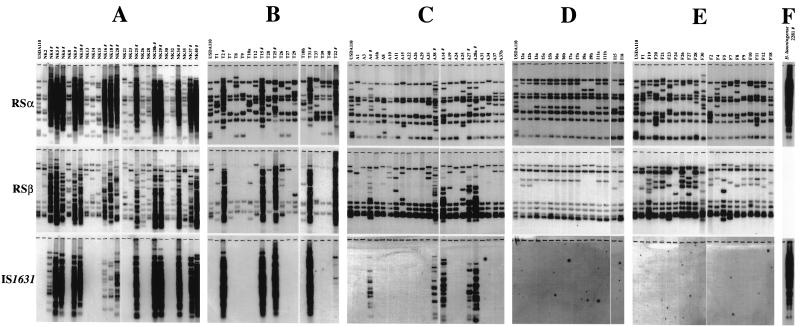FIG. 4.
Distribution of IS1631 among B. japonicum field isolates and B. liaoningense. Total DNAs from B. japonicum field isolates from five field sites in Nagakura (A), Tokachi (B), Ami (C), Ishigaki (D), and Fukuyama (E) and from the type strain, of B. liaoningense, 2281 (F), were digested with XhoI. USDA110, a non-HRS strain of B. japonicum, was used as a control. Field isolates were designated by numbers prefixed with A, T, NC, NK, F, or I. #, HRS strains (determined according to the copy numbers of RSα and RSβ [17]). Niigata-type HRS strains from the Nagakura site (A) had a markedly higher number of RSα copies than non-HRS strains, whereas Tokachi-type HRS strains showed abundant copies of RSβ (B) (17). HRS strains from the Ami site (C) had a significantly higher copy number of RSβ than non-HRS strains from this site and were defined as Ami-type HRS strains in the present study (see the text). B. liaoningense 2281T fell into the category of HRS strains in terms of hybridization with RSα and IS1631.

